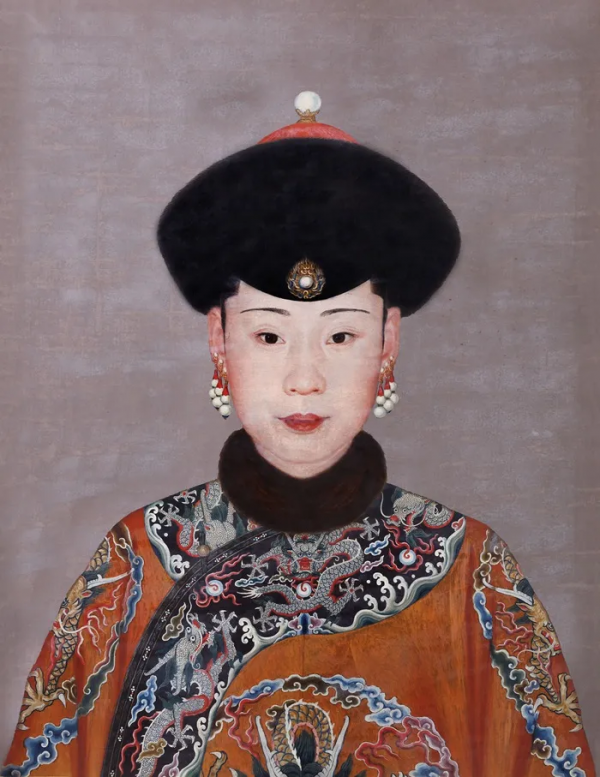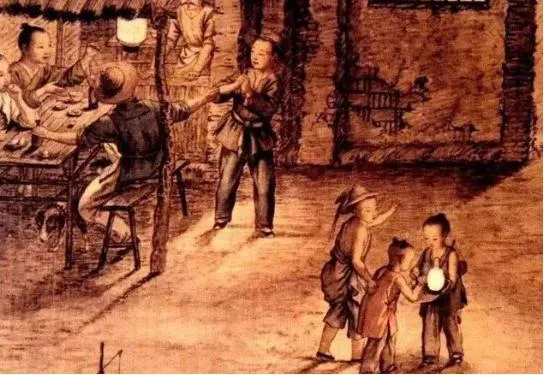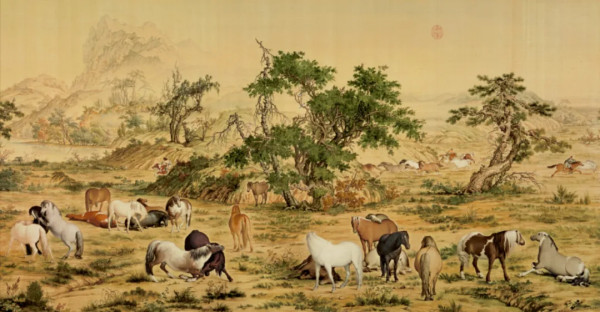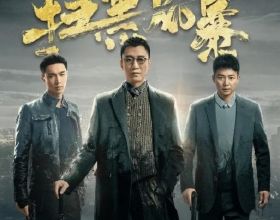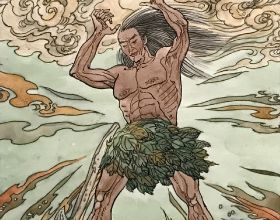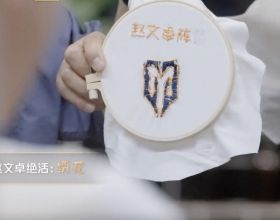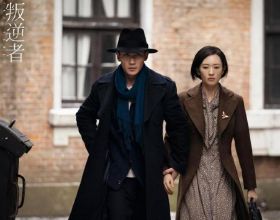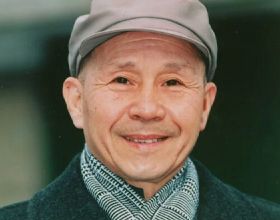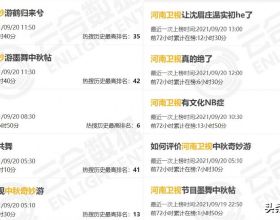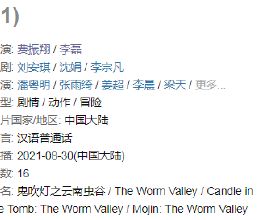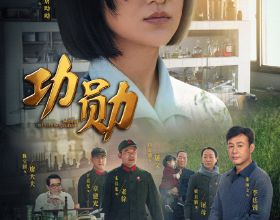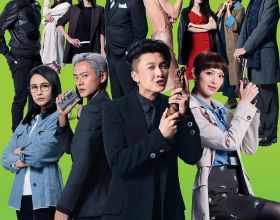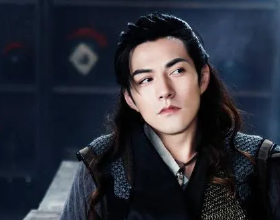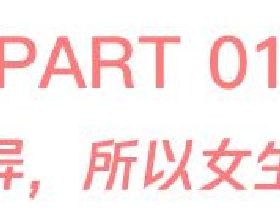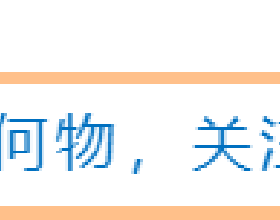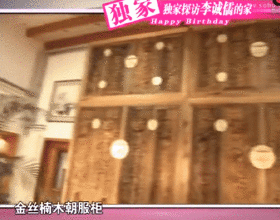此前,我們曾介紹過與中國結緣的外國畫家。
In our previous articles, we introduced some foreign painters who had deep relations with China in their life.
今天,我們將再次聚焦一位曾供職於清代宮廷的西洋畫師。
Today, let's look at another western painter who spent years in China painting court members of the Qing Dynasty.
前段時間,在北京保利藝術博物館舉辦的一場展覽當中,一幅清宮后妃油畫半身像吸引了不少人。
At a recent exhibition held in Beijing's Poly Art Museum, many visitors were captivated by a painting of an imperial concubine of the Qing Dynasty.
這幅畫色彩明亮,展現了一名年輕女子的端莊姿態。她頭戴羽毛帽,佩戴珍珠耳環,身著一件橘色的刺繡龍袍。
The half-length portrait depicts vividly a young and elegant woman wearing a feather hat, pearl earrings and a gorgeous orange robe embroidered with dragon patterns.
這是一幅純惠皇貴妃的肖像畫,畫的創作者正是來自義大利的郎世寧。
This impressive painting of Qianlong Emperor’s favorite concubine, Chunhui, is a work of Giuseppe Castiglione (1688-1766), an Italian missionary and painter who was better known by his Chinese name Lang Shining.
純惠皇貴妃半身油畫像,私人收藏 The half-length portrait of Consort Chunhui
郎世寧(1688-1766),義大利米蘭人,原名朱塞佩·伽斯底裡內(Giuseppe Castiglione),19歲入耶穌會,被派到義大利北部港口城市熱那亞,為當地教堂繪製過兩幅壁畫。
Born in Milan, Castiglione was admitted to the Society of Jesus in Genoa at the age of 19, where he painted two murals for local churches.
康熙五十四年(1715),年僅27歲的義大利人郎世寧便來到了中華大地,在傳教士馬國賢的引薦下,他見到了康熙帝。此後,郎世寧就開始了他長達51年的旅居生活,歷經康熙、雍正、乾隆三朝。直至78歲去世前,他仍然在宮廷內為乾隆帝作畫。
Castiglione came to China and visited Emperor Kangxi at the recommendation of a fellow missionary Matteo Ripa (1682-1746) in 1715. He was then employed as a court painter and came to serve three emperors—Kangxi, Yongzheng (1678-1735) and Qianlong (1711-1799)— for 51 years till he passed away at the age of 78.
1715年,郎世寧自歐洲出發前往中國,最先抵達的地方是澳門,此時的澳門已經為葡萄牙人所強佔。後來郎世寧從澳門輾轉陸路和水路,經由廣州繼續北上,所以嚴格說來,他所感受到的第一座具有東方氣息的城市便是廣州。
Castiglione first arrived in China at a port of Macao and traveled to Canton (now Guangzhou) before heading to Beijing. As Macao was controlled by the Portuguese at that time, Canton was the first city presenting him the traditional culture of the oriental world.
目前懸掛於美國斯坦福大學藝術博物館的大型水墨設色繪畫《羊城夜市圖》便是他曾在廣州停留的生動證據。
During his stay in Canton, Castiglione produced a large ink painting of the night market view of the city, which is now housed in the Stanford University Art Gallery and Museum.
《羊城夜市圖》以其豐富迷人的細節,生動刻畫了羊城城郊珠江河岸一個夏日夜晚的生活場景。畫面上的小販、船伕、酒肆,雖用的全是中國畫材料,但明顯能感覺到出自歐洲人之手,只是將油畫筆換成了毛筆。
The painting depicts in detail a scene of social life on the outskirts of Canton on a summer night. Judging by the techniques employed to portray the figures, one could easily tell that the work was created by a westerner despite the typical Chinese painting materials used.
繪製帝后肖像時,郎世寧將西洋油畫技巧與東方審美相結合,開創了中西融合的繪畫新風——一種經乾隆皇帝“改造”而成的“新體畫”,這成為中國早期油畫的開端。
Castiglione stood out among court painters in China for ingeniously combining Chinese and western painting styles and techniques and spawning a new school of painting which, after some modifications from Emperor Qianlong, marked the start of early oil painting in China.
乾隆朝服像,北京故宮博物院藏 A painting of Emperor Qianlong in court dress, housed in the Palace Museum in Beijing
乾隆元年(1736)是郎世寧來華的第21年,自此,他開始了從事新體畫創作的黃金時代,其中不少畫作都描繪了乾隆的文治武功。
From 1736, Castiglione began his creation of new-style paintings and approached the golden period of his painting career in China. He produced a lot of works depicting the political and military achievements of Emperor Qianlong.
除了繪製宮廷肖像畫、功德慶典畫以及圓明園的壁畫外,郎世寧還專注於記錄宮廷寵物、駿馬和花卉植物,有時也畫山水。他將西方繪畫中的透視法和陰影描畫法(偶爾也有明暗對照法)引入中國宮廷體繪畫中,逐漸形成了一種中西結合的寫實主義繪畫風格。
The subjects of Castiglione’s paintings were diverse, from emperors and concubines, ceremonial events to pets, horses, flowers and landscape. He also painted murals for Yuanmingyuan, the Old Summer Palace. Castiglione applied western oil painting techniques such as scenography, shadows and chiaroscuro to Chinese court painting to present a realistic art style.
白鷹圖,臺北故宮博物院藏 The painting White Falcon, housed in Taipei Palace Museum
百駿圖,臺北故宮博物院藏 The painting One Hundred Horses, housed in Taipei Palace Museum
乾隆圍獵聚餐圖,北京故宮博物院藏 The painting Emperor Qianlong attending Imperial hunting games, housed in the Palace Museum in Beijing
當時的皇家畫院(如意館)匯聚著一批來自不同門類的畫師,郎世寧是當中極為特殊的一位。
Castiglione held a unique position among a great number of painters of different genres working in the imperial art academy of the Qing Dynasty.
從康熙時期開始,他一直得到重用,乾隆帝更是任命郎世寧為御前畫師,授三品頂戴花翎,甚至被准許進入寢宮為他畫畫。
Since the reign of Emperor Kangxi, Castiglione had won special favor of Chinese rulers. Emperor Qianlong, the grandson of Kangxi, appointed Castiglione as a third-grade official entitled to wear Hualing, a kind of hat indicating one's official rank in the Qing Dynasty. Castiglione was even granted permit to enter the emperor’s bedchambers to paint for him.
郎世寧的畫筆彷彿一臺手動“照相機”,
使得帝王妃後、花鳥山水
都被賦予別樣的活力和生機。
他以驚人的藝術表現力,
創作了大量栩栩如生的畫作,
把一生都獻給了中國的宮廷畫藝。
Castiglione devoted his lifetime to Chinese court painting and his works brought to life the beautiful views of the imperial palace and gardens and the looks of royal members of the Qing Dynasty, which were valuable art for people of the modern generation to learn and appreciate.


